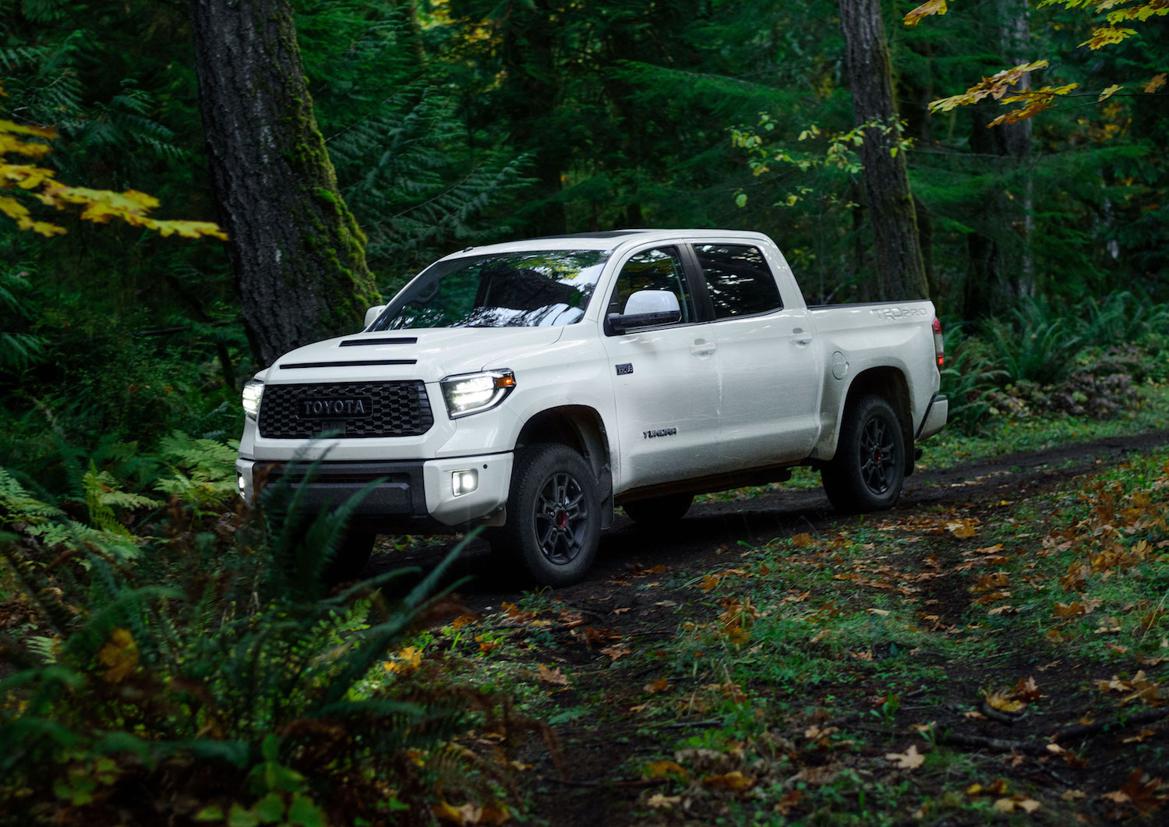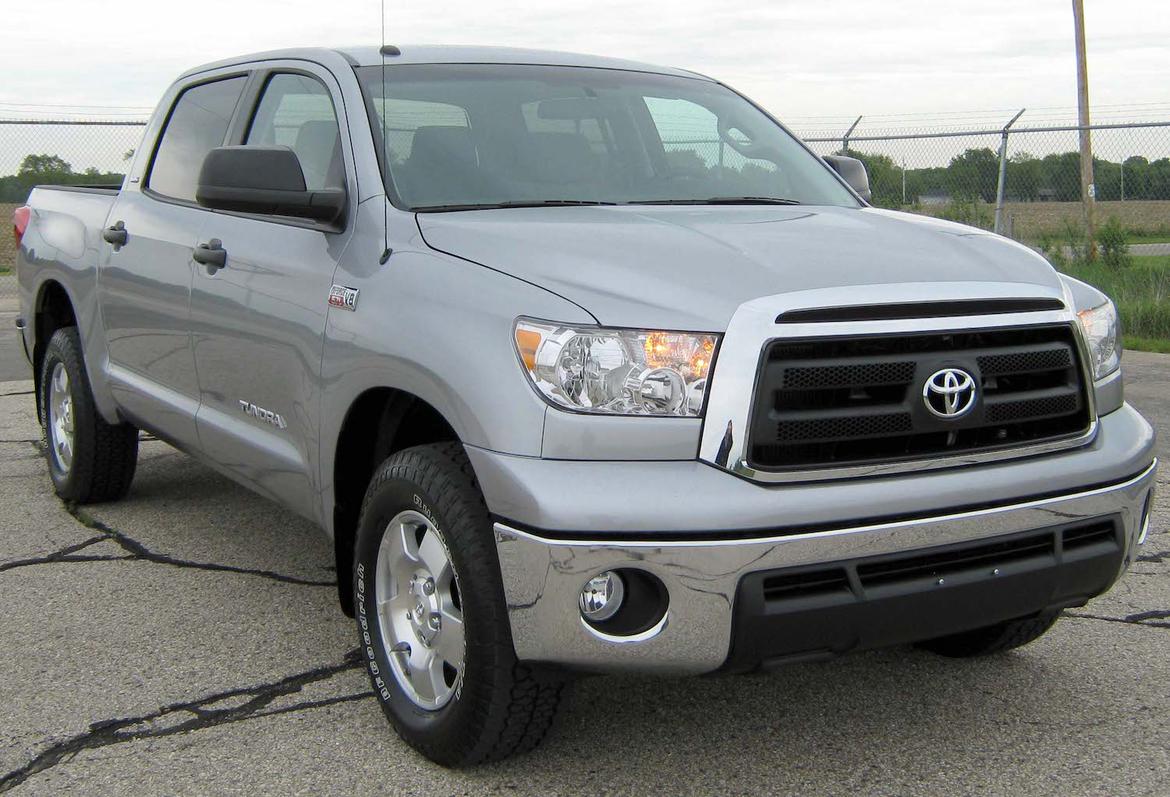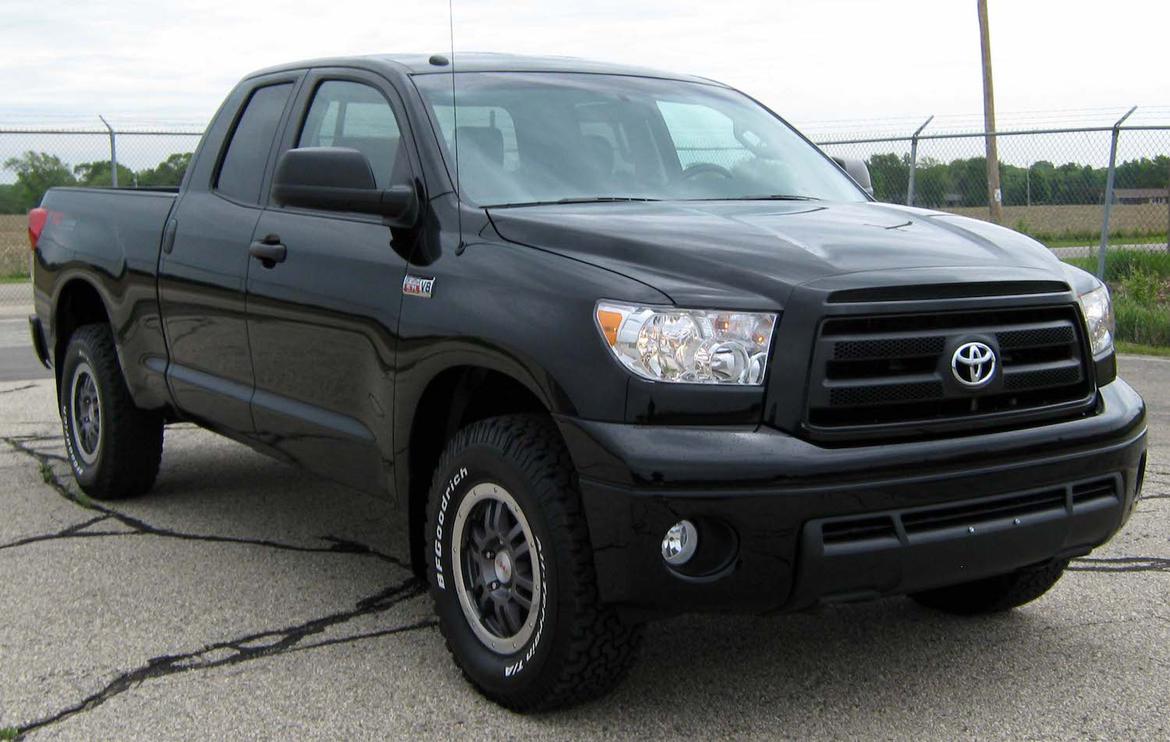My friend has a crew cab with the short bed, lifted and larger wheels/tires. I borrowed it for a week and got 11mpg with it in mixed driving. It truly got abysmal fuel mileage as that was with it totally unloaded and not towing anything. If you can average 15mpg in one of these things you're doing really, really well.
Y our story should be corrected
no crewmax comes with bed larger than 5.5 feet
air injection pump failure is the biggest problem with the tundra
docwyte said:
My friend has a crew cab with the short bed, lifted and larger wheels/tires. I borrowed it for a week and got 11mpg with it in mixed driving. It truly got abysmal fuel mileage as that was with it totally unloaded and not towing anything. If you can average 15mpg in one of these things you're doing really, really well.
that's the problem, lifted with larger rims and tyres. Lifted means less aerodynamic and the larger rim and tyre package needs more power to get it rolling. I get 13mpg out of my 2003 disco, which has full time four wheel drive, dreadful aero, heavy weight, and an engine that was designed in the 50s. The Stock Tundra, even with the 5.7, should do better than that.
I saw one the other day - short box (regular short box) short cab 5.7. I bet that lil rig scoots!
My 2015 Land Cruiser is kissing cousins with one of these and I gotta say - its great. 380/400 silky smooth naturally aspirated V8. Pass anything but a gas station.
Opti
Dork
3/24/20 1:28 p.m.
I forget how old this platform is. You mentioned the 04 Chevy you were using as a tow truck before, and that reminded me this platform goes back to 2007, Meanwhile the GM twins have been through 3 generations since then.
docwyte said:
My friend has a crew cab with the short bed, lifted and larger wheels/tires. I borrowed it for a week and got 11mpg with it in mixed driving. It truly got abysmal fuel mileage as that was with it totally unloaded and not towing anything. If you can average 15mpg in one of these things you're doing really, really well.
I reset the fuel economy gauge on my 2010 when I got in in early December, and so far I'm averaging exactly 15, which includes a couple no-tow road trips, one short towing trip on mostly 55mph roads, and around town work. I'll say that even getting that it's not easy, and it;s only there at the oment because I just got back from an unladen road trip. These are great trucks, but they have a taste for the juice.
93gsxturbo said:
I saw one the other day - short box (regular short box) short cab 5.7. I bet that lil rig scoots!
My 2015 Land Cruiser is kissing cousins with one of these and I gotta say - its great. 380/400 silky smooth naturally aspirated V8. Pass anything but a gas station.
0-60 on the lightest configurations of 5.7 trucks was just a tick over 6 seconds, and 1/4 mile was like 14.6. That's gettin' it for a big rig like these.
Opti said:
I forget how old this platform is.
https://jalopnik.com/details-of-six-new-toyota-models-including-next-gen-86-1842473009
Then comes the all new 4Runner and Sequoia coming in 2022 based on the all new 2021 Tundra that will ride on the all new TNGA-F chassis. These will get a TwinTurbo Hybrid V6 and NO MORE V8.
Then a new 2024 Tacoma.
Lexus is killing off V8 models under the $90k price point and an all new TwinTurbo V8 will debut in the 2022 LC-F.
The LS and ES are getting a 2022 refresh and the GS if being killed off and replaced with a Lexus version of the new RWD Toyota Mirai sedan. The all new IS is coming for 2021.
An all new NX is coming on the new TNGA-K platform with a new 14in Touchscreen and 5 different powertrains.
An all new RX is coming in 2023 and the GX is being replaced in 2023 with a new model.
The LX is going to be insane with a TT V6 hybrid in 2022 and will compete with the Bentayga with a TT V8Land. The Landcruiser on the other hand will be turned into a stripped out off roader and lose any sort of luxury focus in favor of hardcore off roading.
mr2s2000elise said:
no crewmax comes with bed larger than 5.5 feet
Nice catch. That's what I get for writing buyer's guides at midnight on a Saturday.
Fixed.
In reply to JG Pasterjak :
Thanks!
I have a tacoma 4 door 01 and bought a 18 tacoma with 6.5 bed
I really need a crewmax with a 8 feet or 6.5 bed, but toyota sadly doesn't do it . To me the 5.5ft is unuseable for my needs . Hope toyota listens to us long time customers and gives the crewmax a bigger bed for the new generation that is coming.

























